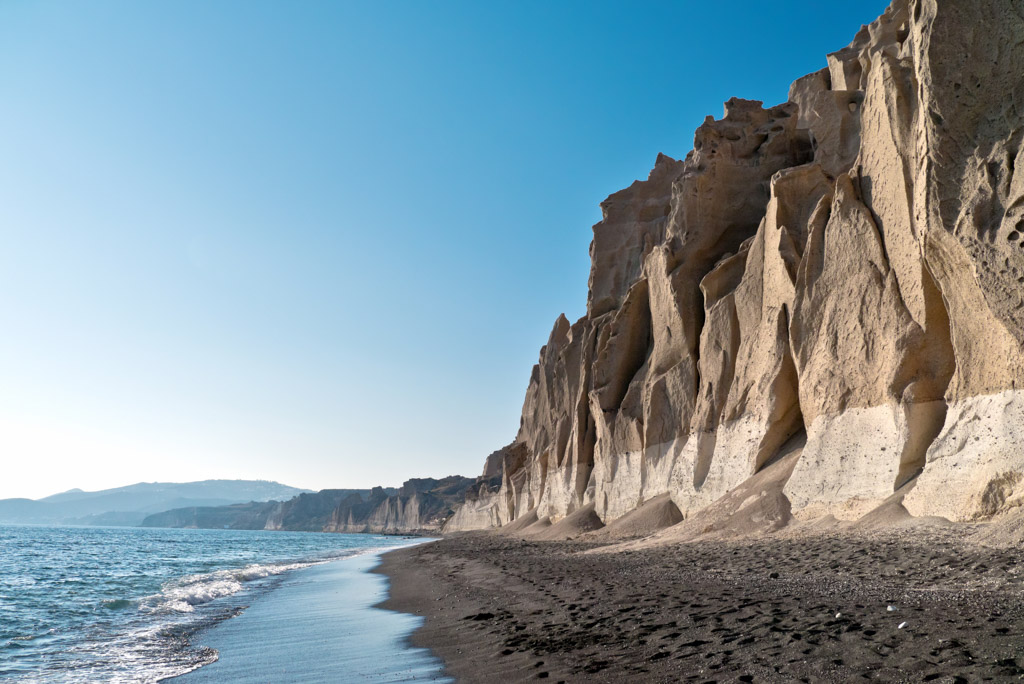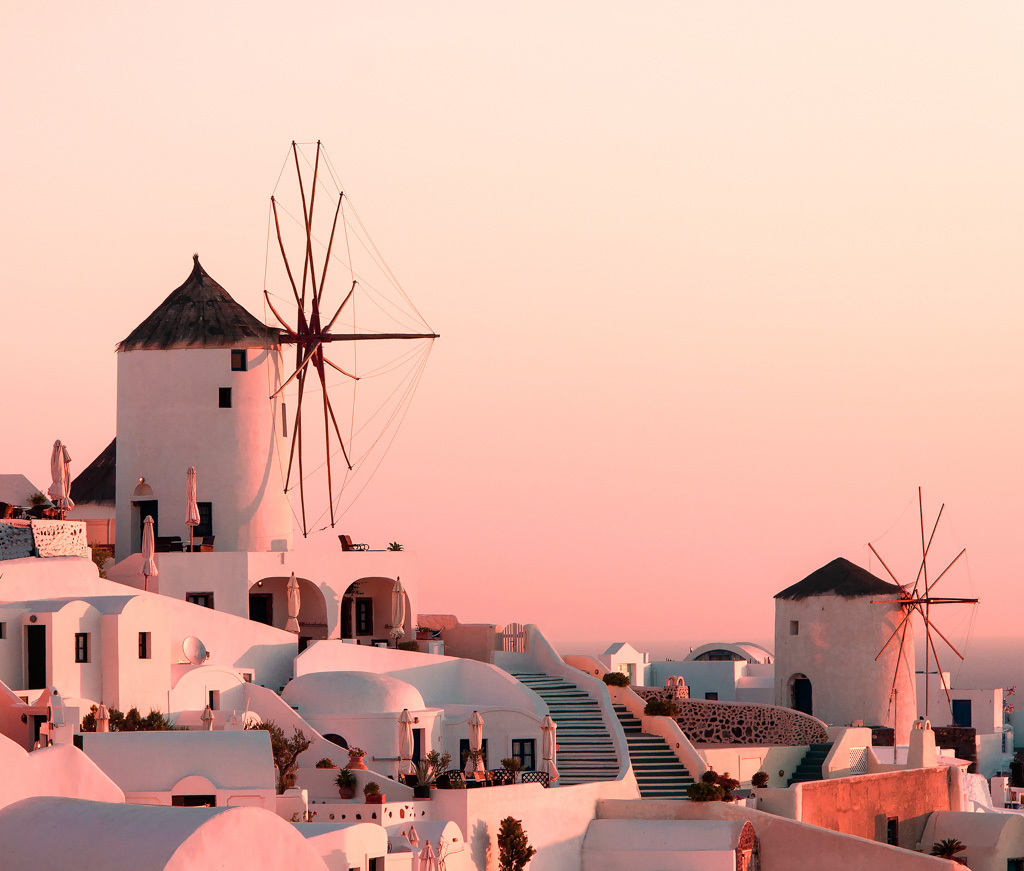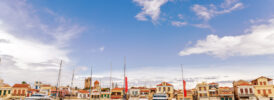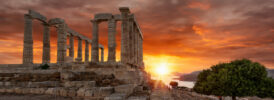Amid the many charms of Santorini – the sunset over the caldera, the drama of cliffside Thera (Fira), the crisp Assyrtiko wine – Ancient Akrotiri holds a place of its own. Akrotiri is one of Greece’s most fascinating and mysterious excavations. A visit here will illuminate a facet of Ancient Greek culture less known.
Ancient Akrotiri: Ancient and Sophisticated
Just how old are the oldest traces of human habitation in Santorini? Traces of fishing and farming from as early as the 5th millennium BC have been found (Imagine the Golden Age of Athens, the era that gave us the Parthenon, was the 5th century BC – add a zero). By the 3rd millennium, this society had expanded, prospering through trade. Due to its strategic position with access to both Minoan Crete and with Cyprus, it became a copper processing center, prospering further still.
Ancient Akrotiri – A Cultural Wonder
What did the people of Ancient Akrotiri do with their wealth? They lived very well. First, the basics – the ancient city had not only paved roads and lovely two story homes, but also a sewage system.

But more than that, they lived with opulence and beauty, using high quality pottery, adoring themselves with beautiful fashions and jewelry. We know this not only because of the findings, but because of the frescoes gracing their homes. These depict women of fashion and grace, as well as other scenes. Famous among them are, the antelope fresco and the “Boxers” – two youths engaging in sport – highlights of a visit to Athens’ National Archaeological Museum. One marvels at the details – lions, dolphins, even a pair of swallows.

The Minoan Connection
We know that the people of Ancient Akrotiri engaged in trade with the Minoans. But also, anyone familiar with the Palace of Knossos and the frescoes there will at once see a close cultural connection. These two sophisticated Bronze-Age settlements shared a similar aesthetic. And they also shared a system of writing – Linear A. The two societies shared a certain sophistication. And in some measure, they also shared the same fate – for the catastrophic phenomenon that brought a swift end to one surely impacted the other.
Drama in the Mediterranean

In the 16th century BC – between 1620 and 1530 it’s estimated – there was a massive, catastrophic volcanic event. The eruption of Thera was one of the largest volcanic eruptions in the history of mankind. The entire center of the island sank, leaving behind the curve of today’s Santorini, Thirasia, and the Tholos. It also created the Caldera, one of the most famous – and surely the most picturesque – bays of the world.

Life in Akrotiri came to an abrupt end, frozen in time under masses of volcanic ash and lava and preserved much like Pompei. Happily though in this case, excavations revealed no unburied remains – it appears that an orderly evacuation preserved life. Meanwhile, subsequent earthquakes and a Tsunami devastated surrounding areas, coastal Minoan Crete among them.
A Thrilling Discovery
In the second half of the 19th century, locals had been finding some interesting objects at a quarry. This prompted the French geologist Ferdinand André Fouqué to investigate further, leading to the publication of his book Santorini and its Eruptions.
 It would not be until the next century that archaeological excavations were begun in earnest, by Spyridon Marinatos in 1967, whose choice of site was ideal – the first traces of the great settlement revealed themselves within just hours of the beginning of the excavation. Thick volcanic debris preserved entire structures in excellent condition. The frescoes, in particular, were a marvel. These include the famous “House of the Ladies” fresco and the “Blue Monkey” fresco.
It would not be until the next century that archaeological excavations were begun in earnest, by Spyridon Marinatos in 1967, whose choice of site was ideal – the first traces of the great settlement revealed themselves within just hours of the beginning of the excavation. Thick volcanic debris preserved entire structures in excellent condition. The frescoes, in particular, were a marvel. These include the famous “House of the Ladies” fresco and the “Blue Monkey” fresco.
Santorini has not only the Bronze Age marvels, but impressive findings from ancient settlements of later eras. In 1896 (and just before the time when Sir Arthur Evans was working on the excavation of the Minoan Palace of Knossos on Crete in 1900), Baron Hiller von Gaertigen took the first steps in the excavation of ancient Thera, beginning at Mesa Vouno. What he discovered here was the ancient settlement that had brought life back to the island after the devastating eruption. In the 8th century BC, Mesa Vouno (‘Mesa’ – middle, ‘Vouno’ – mountain), a naturally fortified spot at an elevation of close to 370 meters, attracted the Dorians, led by king Theras of Sparta – hence the name “Thera”.
A Legendary Civilization
While we know of their skill in trade, their artistic refinement and their technical sophistication based on the impressive findings, still much about this Bronze Age culture is unknown. Especially as it met such a swift and dramatic end, it captures our imagination. Plato’s dialogues Timaeus and Critias famously mention Atlantis. While it is agreed now that this is fictional, surely some real life sources serve as Plato’s inspiration, among them, Ancient Akrotiri.
Have you ever heard of the civilization of Ancient Akrotiri, or visited beautiful Santorini?





